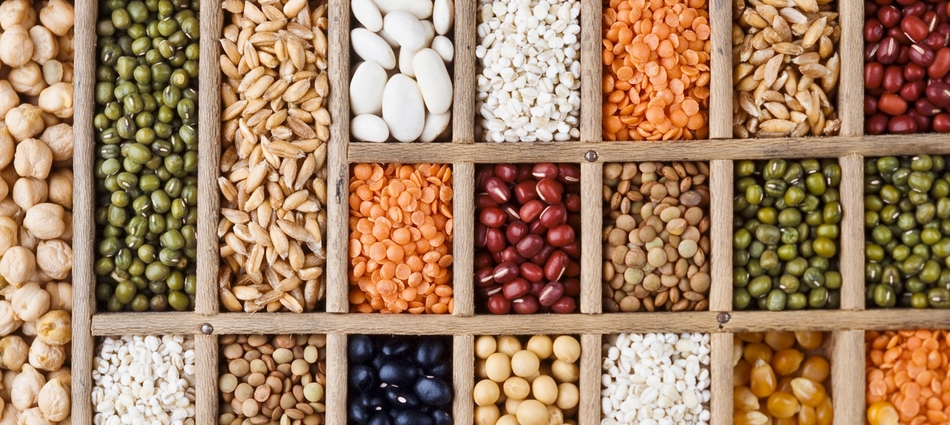Once again my apologies. There just aren’t enough hours in the day sometimes.
This one is at least a week late.

Saving Seeds
Again, this is what we do, other folks will most undoubtedly do it differently than we do, and that’s ok. It is also beyond the scope of these articles (and my knowledge or gardening experience) to cover every plant grown for food, in fact I’m only going to cover a few broad groups of plants in this article. It is my hope that this information will spur you on to perform your own research and build your own knowledge base.
Processing Seeds
The general procedure we follow is to collect the seed, open air dry it (thoroughly), refrigerate it, then freeze it.
Collection and Drying
Because we marked the plant, limb or specific fruit we were going to use for seed it is a fairly simple matter to avoid harvesting our seed plants until we are ready to collect our seed specimens for processing. Hopefully you’ve done the same so you know what you are saving. Regardless which species of plant we are collecting all collected seed goes into individual containers marked to indicate their genealogy.
During the collection process you will want to evaluate your seed plants and reject any that have undesirable traits. Lettuce that bolted early would be a good candidate for rejections because you want to propagate plants that stand well. A badly formed and small pepper would be rejected over one that has good conformity and size. Just use some common sense and you’ll do fine.
You can loosely group your plants into two groups for seed collection, wet seeds (tomatoes, cucumbers, watermelon and squash for some examples) and dry seeds such as onions, beans, beats, corn and peppers (there are exceptions such as Tabasco peppers but they are still treated as a dry seed). Wet seeds need to be washed before they are dried.
With peppers (both sweet and chili) we pick the whole pepper and then slice through it from side to side. We do not remove the seeds yet. We then hang the peppers to dry. For some reason and I’ve never bothered to research it, we have better success from our pepper seeds if we let them dry in the pepper pod before we collect them. The purpose in cutting through the pod is to allow a more even and quicker drying.
Pole beans and corn present a little problem for us in that the weather usually turns before they have the opportunity to completely dry on the vine or stalk in the garden.
With beans our solution is to cut the bean vines off just above the ground and then hang the whole vine(s) in the shop to finish drying. As the bean pods mature they will turn from a rich green color to a brownish white (at least the varieties we grow) and have a leathery texture to them. We usually cut them off at this point to avoid the wet fall weather wreaking havoc on them. They are not ready to harvest for seed until the outside of the bean pod is dry and crumbly. This is also the method we employ for the beans we raise for dried beans.
With corn we leave the ears on the stalk until the last possible moment. Corn for seed needs to mature far longer than the corn you harvest for eating or preserving. You will need to protect these ears from damage by animals as they’ll be some of the last things for them to forage on in your garden. Once we harvest them we’ll strip the husks back to the base of the cob and then string them up to finish drying. They will be ready to remove from the cob when the kernels have pulled back from each other and you can easily remove them from the cob. We test with our thumbnail as well. If we can leave a crease in the kernels they need to dry longer. Once they are ready for removal from the cob we strip them by hand into individual containers.
Tomato seeds require some further processing in that we ferment our tomato seeds. Fermentation is not required to store tomato seeds but we have much better success in storing seeds when we do, enough so it’s worth the extra effort. Fermentation offers the benefits of killing some of the bad bacteria that can spoil seed, it mimics what happens in nature when an overripe tomato falls to the ground and rots thereby removing the germination inhibitors present on the seed. Another benefit to fermenting tomato seeds is during the fermentation process bad seeds will generally float to the top while good seeds will sink to the bottom. This isn’t 100% true but close to it and every little bit helps, especially when you go hungry if your efforts don’t pan out.
The lazy mans method of seed fermentation – Take an overripe tomato, scoop out the seeds and all the surrounding goo into a shallow container. Remove the big chunks of pulp and flesh. Pour remainder into a glass jar. Add distilled (or at least non chlorinated) water to about an inch or so above the seeds. Place a jar lid (minus the ring) on the jar and let the whole mess set for a few days in a warm location. A light colored/white film will begin to develop on the surface. This tells you the fermentation process is working right. After a few to several days, we usually let it go until the film is fairly substantial, pour off the film and the fluid underneath it leaving just the good seed behind in the bottom of the jar. Wash the remaining seeds in a fine mesh strainer or piece of screen and place in a labeled container.
Tomatoes are about the only wet seed we ferment. With cucumbers, summer squash (and relatives) we leave the fruit on the plant until it is way beyond overripe and actually beginning to rot. It is at this point we collect the seed and wash it.
With pumpkins and winter squash we don’t collect the seed until we get ready to use them for food so they may not get processed for seed for a few to several months.
Plants like beets, carrots and onions can drive you crazy collecting the seed because they are biennials. You’ll either need to heavily mulch the beets and carrots in place in the garden to keep them from winter freeze damage or carefully dig up some mature plants and overwinter them in trays of clean sand (kept above freezing) for replanting the next season so they can flower and produce seed. Once beets have gone to seed you can collect the blossoms to dry. Once dry rub them between your palms separate out the seed. For all intents and purposes carrots are identical in process. It can take between forty and sixty plants at a minimum to maintain genetic diversity. Onions for seed can be stored just like the rest of your onions, just keep track of your seed onions so you know what ones to plant next spring. Once they flower and have gone to seed cut the flower pods off the top the stalk and then drop the flower pods in a brown paper bag to finish drying.
Once you have collected your seed it is essential that you thoroughly dry it. Some seed such as beets and onions and mustard have a dried seed once you strip them from the spent flowers. Others such as peppers, tomatoes, cucumbers and so on get placed on drying racks and are air dried. As far as timing goes several factors can affect how long they are on the racks. I’ll let them go until I think they are dry then give them another week or two just to make sure.
Some plants you will want to grow will not have seeds but tubers you’ll need to collect. Potatoes are the perfect example. When you dig your spuds lay them out to dry. Do not wash them. After a few days of drying and hardening store them as you usually would. Keep in mind that potatoes break dormancy once they get above 47 degrees F. We usually will grade out the tubers we intend to use for seed and store it apart from our eating potatoes. You do not want to let your potatoes freeze and storage temperatures near freezing can lead to several other problems involving the conversion of starches to sugars and the reverse.
Refrigeration and Freezing
A lot of folks just store their seed in a dark, cool and dry place. We employ some extra steps. After our seed is completely dry we’ll refrigerate it for a week or two and then we freeze our seed. We believe refrigeration and then freezing mimics nature and the refrigeration period helps the seeds go completely dormant. We place our seed in manila envelopes, labeled with year and genealogy, then in a partitioned cardboard box. We then wrap a black plastic trash bag around the cardboard box and close it with a twist tie. We have been able to germinate seed that is ten years old using this method of storage.
A few notes on our methods:
You can not dry your seed in sealed containers, the moisture needs somewhere to go.
We differ from a lot of folks in that we don’t store our seeds in airtight containers.
You need to dry your seed before you freeze it. Otherwise you’ll rupture the cells walls and your seed will not be viable.
If we ever lose the power grid we’ll go back to storing our seed in a cool, dark, dry place and just not store it for as long.

I’ll note that when I was saving seeds, we used paper or glassine envelopes to do so for the purpose, as it allows any remaining moisture to escape. Never use plastic, you’ll wind up with mold and dead seeds.
Onion seeds (any allium family) are only viable for a year, maybe two. Plan to plant next season. However, most seeds are viable, stored properly, for many years. Save more than you need. You can replant after a bad year, trade with folks to bring in more diversity, and so on.
If you want to get really advanced, dig just a little into Mendelian genetics and how to create hybrids. For one thing, you’re likely to wind up doing this by accident, and it will remove some surprises as the generations go by. For another, there is a reason hybrids have been popular through the ages.
the book in the picture is a good one. I have it myself.
store bought onions that start to turn should be planted if you can.
just to get the seeds if nothing else. found this out one time when I put a few of them in the compost pile. they grew, and the heads or flowers like ends gave me a few seeds. didn’t try to save them, just planted them. got some small onions from the seeds though.
Pingback: The Food Grower Series Continued, Cutting / Suckering / Layering / Grafting | Bustednuckles